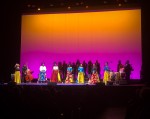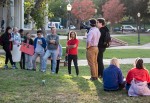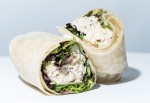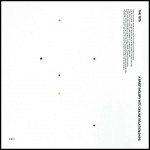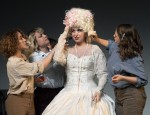PALO ALTO — Nicolas Saveljic attempted to draw his signature foul from the top on the right side, and then ripped it in desperation.
But as the ball skimmed a field blocker and skipped to the goalkeeper’s hands, the sophomore attacker sank nose-deep into the water as the buzzer sounded.
“The hard part is, you don’t know what type of defense they’re going to play,” said coach Adam Wright. “They stayed on the high side, so they were able to get a hand on the ball.”
No. 3 seed UCLA men’s water polo (23-5) fell to No. 2 seed USC (29-3) 8-7 in a game that saw five ties and a Trojan goal with five seconds remaining to decide the game. The Bruins failed to reach the NCAA championship game after defeating the Trojans for the title last season.
UCLA only cashed in on one of its three power play opportunities in the first quarter, but it gave the Bruins an early 1-0 lead.
Freshman attacker Ashworth Molthen set up senior attacker David Stiling on the left post to put UCLA up, but USC driver Hannes Daube answered in the front court to even it up at 1-1 going into the second period.
The Bruins and Trojans only had two opportunities to make personnel changes without burning any timeouts in the first quarter. Senior attacker Austin Rone – who logged one goal and one assist – said the stretches spent out of the pool took just as much concentration and focus.
“There were times where you were either in for a long period of time or sitting on the bench for a long period of time,” Rone said. “(It) can be equally as hard because your mind starts going, you’re getting cold. It was hard to stay present at times, but we’ve trained for that as well.”
Both teams scored three goals in the second period. UCLA led 3-1 and then 4-2, but the Trojans netted the last two goals of the quarter to knot the score at 4-4 going into the break. Rone, freshman attacker Jake Cavano and senior defender Warren Snyder all scored for the Bruins in the frame.
“When we were doing things the right way, we were in control of the game (when it was) 4-2,” Wright said. “That’s the sport. … We gave them some free goals, and you absolutely can’t give free goals at this point.”
In the third period, sophomore utility Felix Brozyna-Vilim was blocked on back-to-back attempts in 2-meters, allowing a USC counterattack that gave the Trojans their first lead of the game.
But UCLA was never able to regain the lead again.
The two teams went back-and-forth in the final frame. Cavano scored twice in the quarter to complete a hat trick, but the Trojans scored their eighth goal with five seconds left to take the lead for good.
Redshirt junior goalie Alex Wolf finished with 16 saves, tied for a career high, but it was not enough to hold off the Trojans.
The seven goals scored were tied for the Bruins’ lowest scoring output of the season. On the flip side, the Bruins held the Trojans to their second lowest scoring game of the year.
Stiling said the Bruins’ defense improved in the latter half of the season as the newcomers became more familiar with the Bruins’ play style.
“Our defensive groups are better when they’re more mature,” Stiling said. “They understand our system more. We do have a young team. We still had to get guys to learn the system early on in the season. As it got later on, (the) guys got more comfortable.”
Wright said that despite UCLA’s improvements throughout the season, the Bruins came up short.
“That was a pretty darn good game,” Wright said. “The bottom line is we had our opportunities and there were some that we wish we probably had back.”

